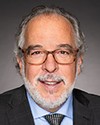I'm hopeful, for the third time, that my participation today can be helpful.
I'll begin by noting that while I am the lead minister for ESDC and responsible for a number of the emergency support measures for students, the Minister of Diversity and Inclusion and Youth was responsible for the CSSG. Both our mandate letters touch on support for young Canadians. In the case of the Minister of Diversity and Inclusion and Youth, she was charged with leading the development of a signature national youth service program within the Canada Service Corps. This was to allow youth to gain skills and leadership experience while making a meaningful difference in their communities.
From that point on, ESDC officials reported directly to Minister Chagger with respect to the Canada Service Corps. While we share officials, I've not been involved in Minister Chagger's files during the pandemic, nor has she been involved in mine.
Within our cabinet there are five ministers with responsibilities under the ESDC portfolio. Authorities and responsibilities have been assigned. Given the legal structure of the department, this has meant specific orders in council and delegations of authorities to my cabinet colleagues.
In this time of pandemic, the pace and breadth of decision-making has been beyond compare. As Minister of Employment, I've been at the centre of our pandemic response. For months, our cabinet COVID committee met day after day to plan and implement our emergency response. Cabinet was also meeting regularly for many hours at a time.
Let me be clear: These were not normal times, and continue to be not normal. On any given day, we were making decisions that ranged from border closures to PPE distribution to whether we should be sending our military into our long-term care facilities. My own responsibilities included the CERB, Canada summer jobs, temporary foreign workers, disability support and various student measures.
Specifically with respect to young people and students, we heard very clearly that they were facing a summer without many job prospects and the real possibility that they may not be able to afford to go back to school in the fall. They needed income support, increased student loans and grants, and jobs. They also wanted opportunities to help out in their communities.
We wanted to help. We began on March 18 by announcing a six-month moratorium on Canada student loan payments. On April 8 we announced changes to the Canada summer job program to allow for additional employers to come on board and to maximize the opportunities for both students and employers through flexibilities in the program. On April 22 we announced a $9-billion package of student measures that included direct income support to students, job creation, service opportunities, enhancements to the Canada student loan and grant program, and more.
A number of ministers were leading these various initiatives. I had responsibility for the Canada student loan program, the CESB and youth employment. The Minister of Innovation, Science and Industry was the lead on the support through the NRC, Mitacs, post-secondary student fellowships and research councils. The Minister of Indigenous Services was the leader on the distinctions-based support for first nation, Métis and Inuit students. The Minister of Immigration, Refugees and Citizenship was responsible for international students. The Minister of Diversity and Inclusion and Youth was responsible for the Canada student service grant, for the “I Want to Help” portal and for the Canada Service Corps.
After the April 22 announcement, we rolled up our sleeves and set about delivering on the measures within our respective portfolios. There were many details to be worked out and further decisions to be made. For my part, I was focused on the student loans and employment and benefit measures. This was a big piece of work, and it included new legislation and regulatory changes.
I had no involvement in the fleshing out of the details related to the CSSG. While I knew the CSSG program parameters, I first learned that WE Charity was being recommended to deliver the CSSG on May 5 as I was preparing for the COVID cabinet committee meeting that same day when the proposal was being discussed. I understood the purpose of the CSSG to be to provide young people with meaningful opportunities to serve in their communities and to assist the non-profit sector with some much-needed capacity. I saw how the CSSG had the potential to interact well with the other student measures we announced.
Given the speed, scope and scale of the program, I agreed with the recommendation to have a third party deliver the CSSG. As the minister for ESDC, I knew just how stretched the public service was and what their workload could or couldn't handle. At ESDC it's common to fund non-governmental organizations to deliver government programs and to help individuals access government programs. This is particularly so when wraparound, ongoing support is provided directly to individuals.
Take the Canada summer jobs program, for example, which, it has been suggested, could have delivered the CSSG. The Canada summer jobs program is a very successful job creation program. Every year we set objectives, assess jobs against those objectives, fund the opportunities that best meet those objectives and advertise these jobs. ESDC doesn't work with individuals to apply for these jobs or succeed in these jobs. Public servants do not onboard, train or mentor the young people who get these jobs.
The organization that would deliver the CSSG program would be tasked with the screening, onboarding, training and mentoring of young Canadians during these important summer months. They would also track volunteer hours and distribute grants.
Following the COVID cabinet committee meeting on May 5, I can confirm that the CSSG proposal was scheduled to be on the cabinet agenda on May 8, but was taken off. I was not involved in any discussions about why this was pulled from the agenda and the Prime Minister's request for more due diligence, as this wasn't my file.
As you can appreciate, I can't share the content of the May 22 cabinet discussions about the CSSG and WE due to cabinet confidentiality. As you know, cabinet decided to proceed with the recommendation to enter into a contribution agreement with WE to deliver the CSSG.
What I will say is that at the time of the cabinet discussion, I knew the Prime Minister and Sophie Grégoire Trudeau had previously appeared at WE events, and I considered this to be a well-known fact. They had both been advocates for youth leadership and youth empowerment for years. I had no prior knowledge of Margaret or Alexandre Trudeau's association with WE, nor did I know about Minister Morneau's daughters' involvement with WE.
Personally, I have spoken at one WE charity event, which was in November of 2016 in Vancouver. I spoke to thousands of young people about the power of inclusion and the everyday choices they can make to ensure that no one is left out, in particular people with disabilities. I was not paid for this appearance and claimed no expenses.
I will conclude by stating again that the CSSG was intended to be an innovative way to provide supports for students, non-profits and communities, and Canada needs bold ideas and innovative solutions more than ever. While WE Charity is no longer delivering the program, we remain as committed as ever to supporting young Canadians.
Thank you.




